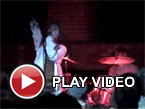New WorldAlga Marghen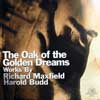
The truth regarding the history of minimalism and American experimentalmusic from the 60s is, despite the best efforts of certainmusicologists and writers, becoming much more widely know. As it does,more and more labels get in on the game of releasing the archivalrecordings that document the history better that any text can. Thesetwo CDs are part of this revisionism. Maxfield was older than most ofthe 60s pioneers; he had his grounding in the academy, ambitions ofbeing a composer of serious music, and access to the space and musicianresources of the classical world. He was pretty much ready to roll whenCage hit the scene. But his music, as presented here in these fourworks from 1960 to 63, is immediate, effective and without the need oftheoretical crutches. Each of these pieces can be seen as inventiveAmerican responses to develoments in the European avant-garde:
Pastoral Symphonyto 18's electronic music but with the major difference of having beencontinuously synthesized (on which synth I wonder?) rather than splicedtogether;
Bacchanale to Schaeffer's and Henry's
musique concrète here incorporating beat poetry, jazz and narrative;
Piano Concert for David Tudor, combining tape music with live piano, to Stockhausen's
Kontakte (1960 version) with similarly unexpected and dramatic results; and finally
Amazing Grace,based as it is on repetitive tape loops, being the most intrinsicallyAmerican of all. Maxfield's valuable and underrated work was ended in1969 when he died, a casualty of 60s drug culture. Harold Budd's musicis much less to my taste. I never put much effort into exploring hismusic since none of it ever caught my fancy but Budd's place in theworld of ambient and spiritualized meditative music is obviously one ofintegrity.
The Oak of the Golden Dreams catches Buddimprovising bagpipe music on the Buchla synth in 1970, a twiddley modalchanter line over a continuous E flat drone (but it's probably relevantthat I grew up in Scotland to hate bagpipes).
Coeur D'Orr hasessentially the same structure: two organ chords, D flat major on theright channel and B major on the left, sit there shimmering andswelling while Charles Oreña noodles a highly expressionist and attimes decidedly jazzy (Coltrane rather than Paul Desmond) line on thesoprano sax. Initially (the sax only comes in in the third minute) theresemblance to Charlemagne Palestine's organ music is obvious. But herethe organ is static and not central, functioning as a bed for melodicimprovisation within the static harmonic sound shape. Thecorrespondence to, say, Frank Zappa's guitar noodling within staticstructures, e.g. 'Ship Ahoy', is more accurate. Such overtly happy(hippy?) music isn't my bag but if you dig Budd these are surely twoimportant documents.

Andso to the Palestine CD which presents five slices of his electronicdrone music recorded between 1967 and 1970. Palestine's innatepredilection for evolving static sounds, transcendental drones andspiritual elevation was evident well before he first had access to thesynthesizers that allowed real-time manipulation of additive (combiningdifferent tones) and subtractive (filtering) synthesis. Thepossibilities for improvised drone music were obvious and he eventuallyhad a custom machine built for this purpose with 16 ultra-stableoscillators from Serge Tcherepnin and 4 band pass filters from DonaldBuchla. The five pieces here, all subtitled
Late Night Electronic Sonority,are snapshots from his "spectral continuum searches for the goldensonority—day, week, month long journeys of harmonies and theirovertones in constant evolution in time and transformation in space."The music is heavy with tension, balanced somewhere between fear,existential question and the possibility of hope; glistening,shimmering and perfectly judged. It's a remarkable achievement thatPalestine originated this approach to music, the instrument design andits musical practice, performed these masterful improvisations,inspired a whole generation of musicians and wound up as a merefootnote, if that, in the history of minimalism. Take those PhillipGlass and John Adams disks down to the thrift store and get abordminimalism's revisionist revolution; apart from being more authentic,the real stuff is of infinitely superior taste and actually has a soul.
samples:
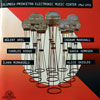 With the electronic music explosion of the 90s came a growth ofinterest in older electronic music and therefore an opportunity formore CDs of that material to be published. Sometimes these CDs make forgood listening but when not they still often make valuable referenceworks, documents of techniques and their pioneers and occasionallybrilliant time-capsules of a lost zeitgeist when making experimentalmusic was actually progressive. Columbia Princeton Electronic Music Center 1961-1973is firmly in the reference section, with works from six composers whoworked in that studio over the years. Bülent Arel's "Postlude from'Music for a Sacred Service,'" is an avalanche of bleepy sounds withsuch an old-fashioned space-age sound that it reminds me a bit ofLaika. It could have been used theme tune on a weekly radio sciencemagazine program. Charles Dodge's "The Earth's Magnetic Field,"originally released on a Nonesuch LP with a fabulous cover photo, haslong been considered a computer music landmark but I do wonder ifanyone enjoys listening to it. It is based on a single-line melody thatfor musical purposes is essentially random and Dodge rendered it in1971 using computer synthesis. As a technical experiment it representsa big step forwards but today it sounds like random data being sent toa ragged old monophonic midi synth. Îlhan Mimaroglu's elegiac "PreludeNo. 8 (To the memory of Edgar Varèse)," assembled out of the sounds ofa harpsichord and a celeste, appropriately has a genuinely uneasy andunresolved tension. Inspired by Ussachevsky and early minimalism,Ingram Marshall based his "Cortez," on the tragic poem of the same nameby Snee McCaig. Much to my surprise it is the high point of the CD. Inthe middle the poem is read and the "Oh..." opening its fourth line isthe sonic source for all of the music, repeating over and over withvarious modifications. The atmosphere seems to convey the menace in theprophesy in the Aztec culture that contributed to their downfall at thehands of Hernan Cortez. The other contributions are by Daria Semegenand Alice Shields. The booklet contains much technical information thatmay be of interest to electro archeologists.
With the electronic music explosion of the 90s came a growth ofinterest in older electronic music and therefore an opportunity formore CDs of that material to be published. Sometimes these CDs make forgood listening but when not they still often make valuable referenceworks, documents of techniques and their pioneers and occasionallybrilliant time-capsules of a lost zeitgeist when making experimentalmusic was actually progressive. Columbia Princeton Electronic Music Center 1961-1973is firmly in the reference section, with works from six composers whoworked in that studio over the years. Bülent Arel's "Postlude from'Music for a Sacred Service,'" is an avalanche of bleepy sounds withsuch an old-fashioned space-age sound that it reminds me a bit ofLaika. It could have been used theme tune on a weekly radio sciencemagazine program. Charles Dodge's "The Earth's Magnetic Field,"originally released on a Nonesuch LP with a fabulous cover photo, haslong been considered a computer music landmark but I do wonder ifanyone enjoys listening to it. It is based on a single-line melody thatfor musical purposes is essentially random and Dodge rendered it in1971 using computer synthesis. As a technical experiment it representsa big step forwards but today it sounds like random data being sent toa ragged old monophonic midi synth. Îlhan Mimaroglu's elegiac "PreludeNo. 8 (To the memory of Edgar Varèse)," assembled out of the sounds ofa harpsichord and a celeste, appropriately has a genuinely uneasy andunresolved tension. Inspired by Ussachevsky and early minimalism,Ingram Marshall based his "Cortez," on the tragic poem of the same nameby Snee McCaig. Much to my surprise it is the high point of the CD. Inthe middle the poem is read and the "Oh..." opening its fourth line isthe sonic source for all of the music, repeating over and over withvarious modifications. The atmosphere seems to convey the menace in theprophesy in the Aztec culture that contributed to their downfall at thehands of Hernan Cortez. The other contributions are by Daria Semegenand Alice Shields. The booklet contains much technical information thatmay be of interest to electro archeologists. 

 On her last album, Caitlin Cary displayed a more folk/rock/country hybrid sound than her fans were used to. True, mostly that was due to the differences in her sound from her former band Whistkeytown: the absence of Ryan Adams' trademark wail and the switch of Cary from background to lead vocals. She also seemed to want a more roots sound than Adams did, as he went more rock and she went more folk after Whiskeytown's demise. She wasn't without Adams on While You Weren't Looking, though, as he appeared on the bonus disc. This time, Cary went it alone, sort of, as she and her band came off the road with some bold new songs and went right in to the studio with Chris Stamey.
On her last album, Caitlin Cary displayed a more folk/rock/country hybrid sound than her fans were used to. True, mostly that was due to the differences in her sound from her former band Whistkeytown: the absence of Ryan Adams' trademark wail and the switch of Cary from background to lead vocals. She also seemed to want a more roots sound than Adams did, as he went more rock and she went more folk after Whiskeytown's demise. She wasn't without Adams on While You Weren't Looking, though, as he appeared on the bonus disc. This time, Cary went it alone, sort of, as she and her band came off the road with some bold new songs and went right in to the studio with Chris Stamey. This new mini-album by Asa-Chang & Junray doesn't point to a new direction for the group, but rather brilliantly confirms that the audaciously original musical experimentation heard on last year's Song Chang was far from a fluke. Percussionist Asa-Chang, tabla master U-Zhaan and programmer Hidehiko Urayama have produced another masterful album in the spirit of kidoairaku, loosely translated as "anything is possible."
This new mini-album by Asa-Chang & Junray doesn't point to a new direction for the group, but rather brilliantly confirms that the audaciously original musical experimentation heard on last year's Song Chang was far from a fluke. Percussionist Asa-Chang, tabla master U-Zhaan and programmer Hidehiko Urayama have produced another masterful album in the spirit of kidoairaku, loosely translated as "anything is possible." Ever wonder what Black Sabbath would sound like if Ozzy and Bill Wardwere shot and killed, leaving a bereaved Tony Iommi and Geezer Butlerto play a slow dirge at their funeral while under the influence ofhorse tranquilizers? What if that sound were then passed through thedepths of hell and slowed down to last the entire day? The sound mightbegin to approximate the slow, doom-laden heaviness of Sunn O))), apair of doped-up metalheads from the Deep South. Sunn O)))'s musick isevil, neolithic metal sludge that was born out of Satan's ass. GregAnderson and Stephen O'Malley's strategy is simple: reduce heavy metalto its primal elements—guitar and bass, played slow and thick, like abarrel of syrupy magma being poured into a hole full of preschoolers.Nobody can actually play guitar this painfully slow, so Anderson andO'Malley make use of a variety of tape effects to achieve the properslow burn. Their two performances at the recent Autechre-curated AllTomorrow's Parties festival in England were certainly some of thehighlights of the event. Sunn O))) performed in Grimm robes, in frontof a huge stack of ultraloud speakers, flanked on the left and right bylive tape editors, and augmented by guest vocalists. For their firstperformance, the legendary Julian Cope joined Anderson and O'Malley toperform spoken-word poetry over the loud drones. For Sunn O)))'s secondshow, Odinist Runhild Gammelsaeter joined the proceedings, sportingsome bizarre Kiss-meets-Wotan face make-up. Runhild performed a seriesof vocal growls and ululations that focused the magickal energy of thebass and guitar rumbles and shot it out into the crowd. Sunn O)))'s newalbum title, White1, appears to be a nod to their last album Flight ofthe Behemoth, which had a completely black cover, and featured novocals and no guest appearances other than a remix collaboration withMerzbow. For this outing, Sunn O))) attempt to approximate their liveshows, with three long tracks featuring the same guest stars thatfrequently join them live. The first track, "My Wall," features SunnO)))'s trademark slow motion feedback riffs in the background, while inthe foreground Julian Cope does a terrific spoken-word bit that is bothingenius and hilarious—a long-form Odinist verse that mythologizes andcelebrates Anderson and O'Malley's transcendent wall of guitar drones.The painted up magician Runhild Gammelsaeter guests on the second track"The Gates of Ballard," a 15-minute fuzzy invocation of the sun thatgoes straight for your cerebral cortex with its mindbending drones.Amazingly, this song actually features drums, a true rarity in the SunnO))) canon. The third track, ominously entitled "A Shaving of the HornThat Speared You" is the most ambient track on the album, featuringmenacing distorted bass rumbles and randomly strummed electric guitar,together with ritualistic vocal intonations that seem to impregnateyour mind with dark thoughts. White1is Sunn O)))'s breakthrough record, effortlessly merging the minimaldroning of their early work with a host of like-minded collaborators,who push and expand their sound into their most tantalizinglyapocalyptic album yet. -
Ever wonder what Black Sabbath would sound like if Ozzy and Bill Wardwere shot and killed, leaving a bereaved Tony Iommi and Geezer Butlerto play a slow dirge at their funeral while under the influence ofhorse tranquilizers? What if that sound were then passed through thedepths of hell and slowed down to last the entire day? The sound mightbegin to approximate the slow, doom-laden heaviness of Sunn O))), apair of doped-up metalheads from the Deep South. Sunn O)))'s musick isevil, neolithic metal sludge that was born out of Satan's ass. GregAnderson and Stephen O'Malley's strategy is simple: reduce heavy metalto its primal elements—guitar and bass, played slow and thick, like abarrel of syrupy magma being poured into a hole full of preschoolers.Nobody can actually play guitar this painfully slow, so Anderson andO'Malley make use of a variety of tape effects to achieve the properslow burn. Their two performances at the recent Autechre-curated AllTomorrow's Parties festival in England were certainly some of thehighlights of the event. Sunn O))) performed in Grimm robes, in frontof a huge stack of ultraloud speakers, flanked on the left and right bylive tape editors, and augmented by guest vocalists. For their firstperformance, the legendary Julian Cope joined Anderson and O'Malley toperform spoken-word poetry over the loud drones. For Sunn O)))'s secondshow, Odinist Runhild Gammelsaeter joined the proceedings, sportingsome bizarre Kiss-meets-Wotan face make-up. Runhild performed a seriesof vocal growls and ululations that focused the magickal energy of thebass and guitar rumbles and shot it out into the crowd. Sunn O)))'s newalbum title, White1, appears to be a nod to their last album Flight ofthe Behemoth, which had a completely black cover, and featured novocals and no guest appearances other than a remix collaboration withMerzbow. For this outing, Sunn O))) attempt to approximate their liveshows, with three long tracks featuring the same guest stars thatfrequently join them live. The first track, "My Wall," features SunnO)))'s trademark slow motion feedback riffs in the background, while inthe foreground Julian Cope does a terrific spoken-word bit that is bothingenius and hilarious—a long-form Odinist verse that mythologizes andcelebrates Anderson and O'Malley's transcendent wall of guitar drones.The painted up magician Runhild Gammelsaeter guests on the second track"The Gates of Ballard," a 15-minute fuzzy invocation of the sun thatgoes straight for your cerebral cortex with its mindbending drones.Amazingly, this song actually features drums, a true rarity in the SunnO))) canon. The third track, ominously entitled "A Shaving of the HornThat Speared You" is the most ambient track on the album, featuringmenacing distorted bass rumbles and randomly strummed electric guitar,together with ritualistic vocal intonations that seem to impregnateyour mind with dark thoughts. White1is Sunn O)))'s breakthrough record, effortlessly merging the minimaldroning of their early work with a host of like-minded collaborators,who push and expand their sound into their most tantalizinglyapocalyptic album yet. - 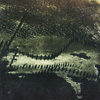 Heavyand fluctuating drones, ponderous organic sounds, and subtle thematicshifts all add up to an album that is about as hard to describe as itis captivating. The swells of organ-like mumurs and the gentle hints of bird sounds and lilting winds on Over the Edgeshad a number of effects on me as I listened to it again and again. Atfirst the drones were too imposing—they seemed like a veil of shadowsthat hid the face of some insidious creature that might either drive meto the edges of insanity or attack me unsuspectingly. A second listenprojected images of impossibly high mountains choked at their peaks byunending snowfall and a third transported me into the nether reigons ofspace illuminated by the death and birth of stars. I've probablylistened to this album over ten times in the last seven days and itnever fails at lighting up my imagination and directing it to composeimages of vast, fantastic landscapes inhabited by perplexing andenigmatic creatures. Though much of the music is repetitous, the variedemotions and reponses it kindled in my mind never became old orunwelcome. The minimal number of sounds used gives me the oppurtunityto fill in the blanks and participate in the music as it wandersthrough the room. I could say this album is ghostly or creepy, but thatwould be oversimplifying its beauty. Andrew Chalk has composed anexcellent piece of meditative music capable of both relaxing andstimulating the mind and igniting the imagination in a flame ofunspeakable power.
Heavyand fluctuating drones, ponderous organic sounds, and subtle thematicshifts all add up to an album that is about as hard to describe as itis captivating. The swells of organ-like mumurs and the gentle hints of bird sounds and lilting winds on Over the Edgeshad a number of effects on me as I listened to it again and again. Atfirst the drones were too imposing—they seemed like a veil of shadowsthat hid the face of some insidious creature that might either drive meto the edges of insanity or attack me unsuspectingly. A second listenprojected images of impossibly high mountains choked at their peaks byunending snowfall and a third transported me into the nether reigons ofspace illuminated by the death and birth of stars. I've probablylistened to this album over ten times in the last seven days and itnever fails at lighting up my imagination and directing it to composeimages of vast, fantastic landscapes inhabited by perplexing andenigmatic creatures. Though much of the music is repetitous, the variedemotions and reponses it kindled in my mind never became old orunwelcome. The minimal number of sounds used gives me the oppurtunityto fill in the blanks and participate in the music as it wandersthrough the room. I could say this album is ghostly or creepy, but thatwould be oversimplifying its beauty. Andrew Chalk has composed anexcellent piece of meditative music capable of both relaxing andstimulating the mind and igniting the imagination in a flame ofunspeakable power. The first time I heard Continental OP, the collaborative projectbetween Dave Pajo and Will Oldham, was on the label Temporary ResidenceLimited's compilation called "Sounds For The GeographicallyChallenged." I bought that record largely because of Continental OP'sappearance on it (I had been tipped off who the band members were) and,after listening to the playful but underwhelming song, regarded theproject mostly as a lark, never expecting to see the collaborativeeffort turn up again. But five years later, team Pajoldham havesurprised me by offering a collection of songs which serve as thescore/soundtrack for an independent short film called "Slitch." Onceagain, the project seems like a lark, as if the two were doing thefilmmaker Dianne Bellino a nice favor, producing a little chestnut:nothing as fancy or remarkable as the Dashiell Hammett character theband's name references. There are springy melodic tracks ("Faster"),Misfits punk rock approximations ("James Tired"), and simplistic songswith second-grade-music-class-instrument accoutrements ("Glock"). Themost resonant song is "La La La," an infectious Free Design inspiredharmony line which I found myself humming throughout the day. All ofthese sort of limp ahead clumsily with no signature sound contributedby either Pajo or Oldham and without any real direction, which bringsus to the film itself. On the flip side of the DVD is Dianne Bellino'sshort film "Slitch." The word "slitch" is an amalgam of "slut" and"bitch," and it is the appellation which the protagonist's bitter oldersisters assign to her because she is distracted in her behavior, aloofin her interactions, and (according to the sisters) often carefreeabout her sexual encounters. At our first glimpse of Slitch, she islying in the grass of some wooded parkland, having ostensibly justslept with the man next to her. She arises with a noticeable glint inher eyes, retrieves her underwear from the shrubbery, and is off. Thefocal point of the film is Slitch's interactions with the local surferdude, played fondly by Will Oldham. Oldham's surfer is as oblivious toSlitch's sexual advancements as she is heavy-handed in their delivery.He just wants to watch surfing videos and surf, while she just wants tohave sex. At one point they compromise and have ice cream. Besidesobserving Oldham, which is always fun, I was delightfully distractedfrom the film by trying to determine if the beach where Bellino filmedwas the same Rhode Island beach where I had spent a Fourth of July onceand a pal of mine had lost his car keys in the sand (they were latermiraculously found in a last ditch effort, but not before I had lenthim $40 to have a new key made. We are both still uncertain if that $40was ever recouped by me). Formally, the film is carefully shot andconsidered. It even has moments of looking delicate, such as Slitch'ssunsetted stroll on the beach or Slitch's silent mom grabbing a MillerHi-Life from the refrigerator, but nothing very engaging in terms ofstory or plot. The film's story is an innocuous Cinderella tale with nosense of danger or drama. Slitch's two evil sisters seem no moreoppressive than a gaggle of noisy geese, and her Prince Charming wouldrather jet off to Hawaii than bother deciphering Slitch's confusingmind state. We are asked to believe that Slitch has an alarming needfor sex, but we never really see this. She does not habituallymasturbate; there are no erotic posters of Corey Haim on her walls; andshe seems able to occupy herself with placid walks on the beach at duskwhile listening to her walkman. Sex seems almost as a healthy avocationto her, not a destructive obsession. The evil sisters ought to relaxtheir criticism of Slitch and take a moment between moustache waxes tograb a beer with mom.
The first time I heard Continental OP, the collaborative projectbetween Dave Pajo and Will Oldham, was on the label Temporary ResidenceLimited's compilation called "Sounds For The GeographicallyChallenged." I bought that record largely because of Continental OP'sappearance on it (I had been tipped off who the band members were) and,after listening to the playful but underwhelming song, regarded theproject mostly as a lark, never expecting to see the collaborativeeffort turn up again. But five years later, team Pajoldham havesurprised me by offering a collection of songs which serve as thescore/soundtrack for an independent short film called "Slitch." Onceagain, the project seems like a lark, as if the two were doing thefilmmaker Dianne Bellino a nice favor, producing a little chestnut:nothing as fancy or remarkable as the Dashiell Hammett character theband's name references. There are springy melodic tracks ("Faster"),Misfits punk rock approximations ("James Tired"), and simplistic songswith second-grade-music-class-instrument accoutrements ("Glock"). Themost resonant song is "La La La," an infectious Free Design inspiredharmony line which I found myself humming throughout the day. All ofthese sort of limp ahead clumsily with no signature sound contributedby either Pajo or Oldham and without any real direction, which bringsus to the film itself. On the flip side of the DVD is Dianne Bellino'sshort film "Slitch." The word "slitch" is an amalgam of "slut" and"bitch," and it is the appellation which the protagonist's bitter oldersisters assign to her because she is distracted in her behavior, aloofin her interactions, and (according to the sisters) often carefreeabout her sexual encounters. At our first glimpse of Slitch, she islying in the grass of some wooded parkland, having ostensibly justslept with the man next to her. She arises with a noticeable glint inher eyes, retrieves her underwear from the shrubbery, and is off. Thefocal point of the film is Slitch's interactions with the local surferdude, played fondly by Will Oldham. Oldham's surfer is as oblivious toSlitch's sexual advancements as she is heavy-handed in their delivery.He just wants to watch surfing videos and surf, while she just wants tohave sex. At one point they compromise and have ice cream. Besidesobserving Oldham, which is always fun, I was delightfully distractedfrom the film by trying to determine if the beach where Bellino filmedwas the same Rhode Island beach where I had spent a Fourth of July onceand a pal of mine had lost his car keys in the sand (they were latermiraculously found in a last ditch effort, but not before I had lenthim $40 to have a new key made. We are both still uncertain if that $40was ever recouped by me). Formally, the film is carefully shot andconsidered. It even has moments of looking delicate, such as Slitch'ssunsetted stroll on the beach or Slitch's silent mom grabbing a MillerHi-Life from the refrigerator, but nothing very engaging in terms ofstory or plot. The film's story is an innocuous Cinderella tale with nosense of danger or drama. Slitch's two evil sisters seem no moreoppressive than a gaggle of noisy geese, and her Prince Charming wouldrather jet off to Hawaii than bother deciphering Slitch's confusingmind state. We are asked to believe that Slitch has an alarming needfor sex, but we never really see this. She does not habituallymasturbate; there are no erotic posters of Corey Haim on her walls; andshe seems able to occupy herself with placid walks on the beach at duskwhile listening to her walkman. Sex seems almost as a healthy avocationto her, not a destructive obsession. The evil sisters ought to relaxtheir criticism of Slitch and take a moment between moustache waxes tograb a beer with mom. 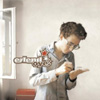 With the undeniable hit that the Kings of Convenience Remixesalbum became, it's unsurprising that the next move from singer ErlendØye was to continue on the electronic music path, employing theservices of many, leaving the acoustic guitar tunesmith days to liedormant. Unrest features ten songs, each with a differentelectronic music collaborator, each taking place in a different city.The concept is appealing for those who found some of thereconstructions and reworkings a spectacular accomplishment, as theinfluences of outside collaborators and remixers had a marvelouseffect. Without the tinkling guitars and folky vocals serving the basisfor the tunes, the truly unique identity is somewhat lost. While thesongs are somewhat catchy, like the fast-talking (almost rapping)"Prego Amore" with Jolly Music, the opener "Ghost Trains" with MorganGeist of New York and the discoey beats of "Sudden Rush" with Kompis,this album could honestly be another drop in the bucket in the trend ofnew techno pop, popularized by Morr related artists, The PostalService, and others. The most exciting direction unsurprisingly comesfrom Prefuse 73, who has integrated a number of horn, vibe, and guitarsounds into the mix, but only ever subtly and not tampering with theelectronic bass sound that drives the rest of the music. For the restof the record, it's a lot of tired drum machine sounds, sparseinstrumentation, and unchallenging vocals.
With the undeniable hit that the Kings of Convenience Remixesalbum became, it's unsurprising that the next move from singer ErlendØye was to continue on the electronic music path, employing theservices of many, leaving the acoustic guitar tunesmith days to liedormant. Unrest features ten songs, each with a differentelectronic music collaborator, each taking place in a different city.The concept is appealing for those who found some of thereconstructions and reworkings a spectacular accomplishment, as theinfluences of outside collaborators and remixers had a marvelouseffect. Without the tinkling guitars and folky vocals serving the basisfor the tunes, the truly unique identity is somewhat lost. While thesongs are somewhat catchy, like the fast-talking (almost rapping)"Prego Amore" with Jolly Music, the opener "Ghost Trains" with MorganGeist of New York and the discoey beats of "Sudden Rush" with Kompis,this album could honestly be another drop in the bucket in the trend ofnew techno pop, popularized by Morr related artists, The PostalService, and others. The most exciting direction unsurprisingly comesfrom Prefuse 73, who has integrated a number of horn, vibe, and guitarsounds into the mix, but only ever subtly and not tampering with theelectronic bass sound that drives the rest of the music. For the restof the record, it's a lot of tired drum machine sounds, sparseinstrumentation, and unchallenging vocals. Via Tania is the project of ex-Spdfgh bassist/vocalist and Australian nativeTania Bowers in a very relaxed, groove-oriented setting as asinger/songwriter. Those familiar with the musical happenings in the Chicagoscene over the last few years may recognize her from adding guest vocals ondiscs by various artists. On her six-song debut solo EP, engineered by acesoundman Casey Rice (Designer), Dream Of... brings in some very coolinstrumental backing from Tortoise/Isotope 217 members John Herndon on drumsand Jeff Parker on guitar, and also enlists Scott Herren (Prefuse 73, Savath+ Savalas) and While to provide a couple of remixes. The three minute, verylaid back "Little China" showcases Bowers beautiful voice, which arrives attimes very delicately, over solid bass, soft drums, and full, jazzy guitarchords. "Fighter" opens with a series of distant guitar overdubs which statethe chord progressions and melody, only to gradually fade out and introduceupright bass and brushed drums and sultry vocals which carry the tune."Mosquito Lights" is a haunting ballad comprised of dark, thick and minorsounding piano chord progressions and multi-tracked vocals which appear tosing of loss. The breathy vocals and overall vibe of the track "UniverseCity" come through twice on the EP; the second time as a remix by While.This version, the longest track on the disc at just under six minutes, isanchored by a very low-end sliding synth bass line, mechanical percussionand sampled woodwinds which give it a real heavy chill-out vibe. Running atjust over twenty-five minutes, this EP makes for a great introduction forBowers' blend of laid back pop, her full-length disc Under A DifferentSky and also as an artist to watch for.
Via Tania is the project of ex-Spdfgh bassist/vocalist and Australian nativeTania Bowers in a very relaxed, groove-oriented setting as asinger/songwriter. Those familiar with the musical happenings in the Chicagoscene over the last few years may recognize her from adding guest vocals ondiscs by various artists. On her six-song debut solo EP, engineered by acesoundman Casey Rice (Designer), Dream Of... brings in some very coolinstrumental backing from Tortoise/Isotope 217 members John Herndon on drumsand Jeff Parker on guitar, and also enlists Scott Herren (Prefuse 73, Savath+ Savalas) and While to provide a couple of remixes. The three minute, verylaid back "Little China" showcases Bowers beautiful voice, which arrives attimes very delicately, over solid bass, soft drums, and full, jazzy guitarchords. "Fighter" opens with a series of distant guitar overdubs which statethe chord progressions and melody, only to gradually fade out and introduceupright bass and brushed drums and sultry vocals which carry the tune."Mosquito Lights" is a haunting ballad comprised of dark, thick and minorsounding piano chord progressions and multi-tracked vocals which appear tosing of loss. The breathy vocals and overall vibe of the track "UniverseCity" come through twice on the EP; the second time as a remix by While.This version, the longest track on the disc at just under six minutes, isanchored by a very low-end sliding synth bass line, mechanical percussionand sampled woodwinds which give it a real heavy chill-out vibe. Running atjust over twenty-five minutes, this EP makes for a great introduction forBowers' blend of laid back pop, her full-length disc Under A DifferentSky and also as an artist to watch for.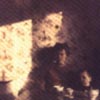 Like many current serious artists, Hajsch—who's work lies somewherebetween experimental electronic, electro-acoustic and musicconcrete—tries to break free from categorization. This remasteredreissue of two limited vinyl only albums originally released in 1992 (Nagual and PFN - Hajsch and collaborators)on his own Quiet Artworks label sound both contemporary andchallenging, thirteen years later. "Akasa" is a quiet but intenseopener: a 16 minute journey starting off with concrete sounds,synthesizers and field recordings which build up an electrifyingatmosphere slowly that finally reaches it's peak when an almostorchestral ensemble of viola, cello and clarinet appears. "Nagual (Part1)" takes use of sharp contrasts, with sparkling water morning birds,bound in a nearly dream-like atmosphere. Parts one and two consistmainly of sounds taken from a bicycle, melodica, and a hardlyrecognizable guitar. In "Nagual (Part 2)" the mood changes to a moreunsettling ambience. For those who've read Carlos Castaneda,this shouldn't be unexpected, as the concept of Nagual stands contraryto Tonal, that represents all our known territory, material andimmaterial. "Nagual (Part 3)" is an otherworldly, nearly harmonic shortappendix created only with synth and samples. "Für Cleo" is a pleasantcinema-like closer where a quiet guitar drone meets a melancholicsaxophone. Hajsch's music requests close attention and throws thelistener in an aural environmentof great clarity. His strength lies with the careful arrangement ofseldom heard sounds in the purposeful use of volume and timing. Thefact that these recordings are over 10 years old doesn't matter much,as 1992is stimulating, serious, and strong evidence that some music can betimeless no matter how styles and technical possibilities change.
Like many current serious artists, Hajsch—who's work lies somewherebetween experimental electronic, electro-acoustic and musicconcrete—tries to break free from categorization. This remasteredreissue of two limited vinyl only albums originally released in 1992 (Nagual and PFN - Hajsch and collaborators)on his own Quiet Artworks label sound both contemporary andchallenging, thirteen years later. "Akasa" is a quiet but intenseopener: a 16 minute journey starting off with concrete sounds,synthesizers and field recordings which build up an electrifyingatmosphere slowly that finally reaches it's peak when an almostorchestral ensemble of viola, cello and clarinet appears. "Nagual (Part1)" takes use of sharp contrasts, with sparkling water morning birds,bound in a nearly dream-like atmosphere. Parts one and two consistmainly of sounds taken from a bicycle, melodica, and a hardlyrecognizable guitar. In "Nagual (Part 2)" the mood changes to a moreunsettling ambience. For those who've read Carlos Castaneda,this shouldn't be unexpected, as the concept of Nagual stands contraryto Tonal, that represents all our known territory, material andimmaterial. "Nagual (Part 3)" is an otherworldly, nearly harmonic shortappendix created only with synth and samples. "Für Cleo" is a pleasantcinema-like closer where a quiet guitar drone meets a melancholicsaxophone. Hajsch's music requests close attention and throws thelistener in an aural environmentof great clarity. His strength lies with the careful arrangement ofseldom heard sounds in the purposeful use of volume and timing. Thefact that these recordings are over 10 years old doesn't matter much,as 1992is stimulating, serious, and strong evidence that some music can betimeless no matter how styles and technical possibilities change. 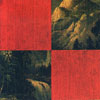 Coming from the school of two guitars, bass and drums, I like to think thatmy interest over the years for certain areas of experimental,electronic-based music has not only lead to a slightly better understandingof the genre but to also recognize and appreciate its more salient artisticqualities. As Antimatter, San Francisco-based sound artist and audioengineer, Xopher Davidson, has recently released a solo disc that plays outlike an aural sojourn to the gallery exhibit of cutting edge abstraction.>From a Powerbook-based standpoint Antimatter vs Antimatter is acollection of experimental soundscapes, frequencies, instrument manipulationand rhythmic collages. Knowing that Davidson holds an MFA could provide someinsight as to his approach when constructing and composing with varioussound textures. Spanning just over an hour, the disc's seventeen tracks areemotionally varied from beautiful and seductive to angry and powerful.Tracks such as "Licht," "Phosphor" and "Gilded Pallor" creatively usetreated/processed guitar as the instrument of focus amidst the intricateweavings of controlled static, low frequencies and drones generated frommodified synthesizers. "Auxiliary" begins with what sounds like an orchestraperforming on an airport tarmac amid the screams of jet engines, all ofwhich abruptly cuts to the odd-timed rhythms of brush-whacked drums againstcycling Euro-styled violin lines that build in intensity over low-endkeyboard drones. "Rangefinder" uses the ultimate droning instrument, thebagpipes, to convey a drawn out melody which is based on layers of specifictones drifting in and out to give the impression of momentum while the lowerfrequencies are subtle and electronically enhanced. A number of the disc'stracks blend together seamlessly as not to interrupt the stream of soundand/or to allow for a musical continuum which results in gradualmodifications until a new composition is occuring. There are certain overallqualities and tones of Antimatter's sound design where, if the mood andsetting are just right, you could get lost in it the same way as when you'restaring at a great painting.
Coming from the school of two guitars, bass and drums, I like to think thatmy interest over the years for certain areas of experimental,electronic-based music has not only lead to a slightly better understandingof the genre but to also recognize and appreciate its more salient artisticqualities. As Antimatter, San Francisco-based sound artist and audioengineer, Xopher Davidson, has recently released a solo disc that plays outlike an aural sojourn to the gallery exhibit of cutting edge abstraction.>From a Powerbook-based standpoint Antimatter vs Antimatter is acollection of experimental soundscapes, frequencies, instrument manipulationand rhythmic collages. Knowing that Davidson holds an MFA could provide someinsight as to his approach when constructing and composing with varioussound textures. Spanning just over an hour, the disc's seventeen tracks areemotionally varied from beautiful and seductive to angry and powerful.Tracks such as "Licht," "Phosphor" and "Gilded Pallor" creatively usetreated/processed guitar as the instrument of focus amidst the intricateweavings of controlled static, low frequencies and drones generated frommodified synthesizers. "Auxiliary" begins with what sounds like an orchestraperforming on an airport tarmac amid the screams of jet engines, all ofwhich abruptly cuts to the odd-timed rhythms of brush-whacked drums againstcycling Euro-styled violin lines that build in intensity over low-endkeyboard drones. "Rangefinder" uses the ultimate droning instrument, thebagpipes, to convey a drawn out melody which is based on layers of specifictones drifting in and out to give the impression of momentum while the lowerfrequencies are subtle and electronically enhanced. A number of the disc'stracks blend together seamlessly as not to interrupt the stream of soundand/or to allow for a musical continuum which results in gradualmodifications until a new composition is occuring. There are certain overallqualities and tones of Antimatter's sound design where, if the mood andsetting are just right, you could get lost in it the same way as when you'restaring at a great painting.  The truth regarding the history of minimalism and American experimentalmusic from the 60s is, despite the best efforts of certainmusicologists and writers, becoming much more widely know. As it does,more and more labels get in on the game of releasing the archivalrecordings that document the history better that any text can. Thesetwo CDs are part of this revisionism. Maxfield was older than most ofthe 60s pioneers; he had his grounding in the academy, ambitions ofbeing a composer of serious music, and access to the space and musicianresources of the classical world. He was pretty much ready to roll whenCage hit the scene. But his music, as presented here in these fourworks from 1960 to 63, is immediate, effective and without the need oftheoretical crutches. Each of these pieces can be seen as inventiveAmerican responses to develoments in the European avant-garde: Pastoral Symphonyto 18's electronic music but with the major difference of having beencontinuously synthesized (on which synth I wonder?) rather than splicedtogether; Bacchanale to Schaeffer's and Henry's musique concrète here incorporating beat poetry, jazz and narrative; Piano Concert for David Tudor, combining tape music with live piano, to Stockhausen's Kontakte (1960 version) with similarly unexpected and dramatic results; and finally Amazing Grace,based as it is on repetitive tape loops, being the most intrinsicallyAmerican of all. Maxfield's valuable and underrated work was ended in1969 when he died, a casualty of 60s drug culture. Harold Budd's musicis much less to my taste. I never put much effort into exploring hismusic since none of it ever caught my fancy but Budd's place in theworld of ambient and spiritualized meditative music is obviously one ofintegrity. The Oak of the Golden Dreams catches Buddimprovising bagpipe music on the Buchla synth in 1970, a twiddley modalchanter line over a continuous E flat drone (but it's probably relevantthat I grew up in Scotland to hate bagpipes). Coeur D'Orr hasessentially the same structure: two organ chords, D flat major on theright channel and B major on the left, sit there shimmering andswelling while Charles Oreña noodles a highly expressionist and attimes decidedly jazzy (Coltrane rather than Paul Desmond) line on thesoprano sax. Initially (the sax only comes in in the third minute) theresemblance to Charlemagne Palestine's organ music is obvious. But herethe organ is static and not central, functioning as a bed for melodicimprovisation within the static harmonic sound shape. Thecorrespondence to, say, Frank Zappa's guitar noodling within staticstructures, e.g. 'Ship Ahoy', is more accurate. Such overtly happy(hippy?) music isn't my bag but if you dig Budd these are surely twoimportant documents.
The truth regarding the history of minimalism and American experimentalmusic from the 60s is, despite the best efforts of certainmusicologists and writers, becoming much more widely know. As it does,more and more labels get in on the game of releasing the archivalrecordings that document the history better that any text can. Thesetwo CDs are part of this revisionism. Maxfield was older than most ofthe 60s pioneers; he had his grounding in the academy, ambitions ofbeing a composer of serious music, and access to the space and musicianresources of the classical world. He was pretty much ready to roll whenCage hit the scene. But his music, as presented here in these fourworks from 1960 to 63, is immediate, effective and without the need oftheoretical crutches. Each of these pieces can be seen as inventiveAmerican responses to develoments in the European avant-garde: Pastoral Symphonyto 18's electronic music but with the major difference of having beencontinuously synthesized (on which synth I wonder?) rather than splicedtogether; Bacchanale to Schaeffer's and Henry's musique concrète here incorporating beat poetry, jazz and narrative; Piano Concert for David Tudor, combining tape music with live piano, to Stockhausen's Kontakte (1960 version) with similarly unexpected and dramatic results; and finally Amazing Grace,based as it is on repetitive tape loops, being the most intrinsicallyAmerican of all. Maxfield's valuable and underrated work was ended in1969 when he died, a casualty of 60s drug culture. Harold Budd's musicis much less to my taste. I never put much effort into exploring hismusic since none of it ever caught my fancy but Budd's place in theworld of ambient and spiritualized meditative music is obviously one ofintegrity. The Oak of the Golden Dreams catches Buddimprovising bagpipe music on the Buchla synth in 1970, a twiddley modalchanter line over a continuous E flat drone (but it's probably relevantthat I grew up in Scotland to hate bagpipes). Coeur D'Orr hasessentially the same structure: two organ chords, D flat major on theright channel and B major on the left, sit there shimmering andswelling while Charles Oreña noodles a highly expressionist and attimes decidedly jazzy (Coltrane rather than Paul Desmond) line on thesoprano sax. Initially (the sax only comes in in the third minute) theresemblance to Charlemagne Palestine's organ music is obvious. But herethe organ is static and not central, functioning as a bed for melodicimprovisation within the static harmonic sound shape. Thecorrespondence to, say, Frank Zappa's guitar noodling within staticstructures, e.g. 'Ship Ahoy', is more accurate. Such overtly happy(hippy?) music isn't my bag but if you dig Budd these are surely twoimportant documents.  Andso to the Palestine CD which presents five slices of his electronicdrone music recorded between 1967 and 1970. Palestine's innatepredilection for evolving static sounds, transcendental drones andspiritual elevation was evident well before he first had access to thesynthesizers that allowed real-time manipulation of additive (combiningdifferent tones) and subtractive (filtering) synthesis. Thepossibilities for improvised drone music were obvious and he eventuallyhad a custom machine built for this purpose with 16 ultra-stableoscillators from Serge Tcherepnin and 4 band pass filters from DonaldBuchla. The five pieces here, all subtitled Late Night Electronic Sonority,are snapshots from his "spectral continuum searches for the goldensonority—day, week, month long journeys of harmonies and theirovertones in constant evolution in time and transformation in space."The music is heavy with tension, balanced somewhere between fear,existential question and the possibility of hope; glistening,shimmering and perfectly judged. It's a remarkable achievement thatPalestine originated this approach to music, the instrument design andits musical practice, performed these masterful improvisations,inspired a whole generation of musicians and wound up as a merefootnote, if that, in the history of minimalism. Take those PhillipGlass and John Adams disks down to the thrift store and get abordminimalism's revisionist revolution; apart from being more authentic,the real stuff is of infinitely superior taste and actually has a soul.
Andso to the Palestine CD which presents five slices of his electronicdrone music recorded between 1967 and 1970. Palestine's innatepredilection for evolving static sounds, transcendental drones andspiritual elevation was evident well before he first had access to thesynthesizers that allowed real-time manipulation of additive (combiningdifferent tones) and subtractive (filtering) synthesis. Thepossibilities for improvised drone music were obvious and he eventuallyhad a custom machine built for this purpose with 16 ultra-stableoscillators from Serge Tcherepnin and 4 band pass filters from DonaldBuchla. The five pieces here, all subtitled Late Night Electronic Sonority,are snapshots from his "spectral continuum searches for the goldensonority—day, week, month long journeys of harmonies and theirovertones in constant evolution in time and transformation in space."The music is heavy with tension, balanced somewhere between fear,existential question and the possibility of hope; glistening,shimmering and perfectly judged. It's a remarkable achievement thatPalestine originated this approach to music, the instrument design andits musical practice, performed these masterful improvisations,inspired a whole generation of musicians and wound up as a merefootnote, if that, in the history of minimalism. Take those PhillipGlass and John Adams disks down to the thrift store and get abordminimalism's revisionist revolution; apart from being more authentic,the real stuff is of infinitely superior taste and actually has a soul. Following up an EP released a couple years back, Stereolab bassistSimon Johns has assembled the first full-length from his project. Theband consists of fantastic players, utilizing a wide spectrum ofinstruments and honing a driving sound most Stereolab fans could easilylatch on to. However, as I enjoyed the brevity of the other EP, as anLP, there's simply something missing. While the music is pleasant andenjoyable, most of the songs don't really progress far from their entrypoint. In addition, with the lack of melodic variety and the frequentdroning of single note playing, all the tracks makes this ensemblesound almost too "jam-band-y" for my own personal tastes. For the mostpart, it never quite gets offensive, that is until the "Theme for anImitation Electric Piano," with the atrocious "Rockin' and rollin' /the theme for an imitation electric piano" lyrics. Getting through theentire album just isn't as rewarding as a short 5-track EP of stuffthat gets in late and gets out early. If the eponymous EP gave thefeeling of a tap, slap, and run, Trinity Neon is a wait, get impatient and give up kinda feel, which, at best can serve as decent aural wallpaper.
Following up an EP released a couple years back, Stereolab bassistSimon Johns has assembled the first full-length from his project. Theband consists of fantastic players, utilizing a wide spectrum ofinstruments and honing a driving sound most Stereolab fans could easilylatch on to. However, as I enjoyed the brevity of the other EP, as anLP, there's simply something missing. While the music is pleasant andenjoyable, most of the songs don't really progress far from their entrypoint. In addition, with the lack of melodic variety and the frequentdroning of single note playing, all the tracks makes this ensemblesound almost too "jam-band-y" for my own personal tastes. For the mostpart, it never quite gets offensive, that is until the "Theme for anImitation Electric Piano," with the atrocious "Rockin' and rollin' /the theme for an imitation electric piano" lyrics. Getting through theentire album just isn't as rewarding as a short 5-track EP of stuffthat gets in late and gets out early. If the eponymous EP gave thefeeling of a tap, slap, and run, Trinity Neon is a wait, get impatient and give up kinda feel, which, at best can serve as decent aural wallpaper.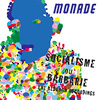 The first exposure to the lead singer of Stereolab, Laetitia Sadier's solo project Monade came on a split single with M (later known as Aerial M and currently Papa M). The music was unobtrusive, peaceful, and serene, much unlike the intense sounds Stereolab were notorious for. Finding Monade music was always a treat, whether it was on an obscure 7" single or a split release.
The first exposure to the lead singer of Stereolab, Laetitia Sadier's solo project Monade came on a split single with M (later known as Aerial M and currently Papa M). The music was unobtrusive, peaceful, and serene, much unlike the intense sounds Stereolab were notorious for. Finding Monade music was always a treat, whether it was on an obscure 7" single or a split release. Touted by just about every publication as being one of the next bestthings, The Stratford 4 leave a lot to be desired on this, their secondfull-length. Equally influenced it seems by My Bloody Valentine, TheCure, and scores of Brit-pop bands, their music is delayed anddistorted guitars with a pop sensibility. Officially, I would like tosay that this sound is going to take them absolutely nowhere unlessthey can improve the juvenile lyric-writing. The music is just fine,imploring pleasant melodies, grooving basslines, and lots of effectsthat make the guitars swirl and shriek behind them. Unfortunately, whatcomes to the forefront is just plain awful. "I went to confession but Ihad nothing to confess. They said what's wrong with you? You're usuallysuch a mess" is almost as bad as "If you want to kiss my mouth, tell mewhat it's all about, if you want to climb into bed with your delicatehead than that would be alright." This is a study in how to write likeDamon Albarn, with a great sense at times of what good music is, but nograsp whatsoever of poetry or prose. This music could stand a bit ofvariation, too, as it seems every song says what it's supposed to inthe first three minutes, then jams out a bit for the rest; or it jams abit in the beginning to build to the proper idea, then soars outtowards the end. The first song on the album, "Where the Ocean Meetsthe Eye," is the only one that shows promise in this sound, with quietbass joining chiming delayed guitars and slightly echoed drums. It allgets engulfed as the flames of loud angry distortion grow higher andhigher. The vocals join in at the height of the volume, and the lyricsare wailed in such a way that they aren't always recognizable. Perfect.Let the music talk and let the lyrics be puzzled over. If they'd donethat more, it probably wouldn't be so bad.
Touted by just about every publication as being one of the next bestthings, The Stratford 4 leave a lot to be desired on this, their secondfull-length. Equally influenced it seems by My Bloody Valentine, TheCure, and scores of Brit-pop bands, their music is delayed anddistorted guitars with a pop sensibility. Officially, I would like tosay that this sound is going to take them absolutely nowhere unlessthey can improve the juvenile lyric-writing. The music is just fine,imploring pleasant melodies, grooving basslines, and lots of effectsthat make the guitars swirl and shriek behind them. Unfortunately, whatcomes to the forefront is just plain awful. "I went to confession but Ihad nothing to confess. They said what's wrong with you? You're usuallysuch a mess" is almost as bad as "If you want to kiss my mouth, tell mewhat it's all about, if you want to climb into bed with your delicatehead than that would be alright." This is a study in how to write likeDamon Albarn, with a great sense at times of what good music is, but nograsp whatsoever of poetry or prose. This music could stand a bit ofvariation, too, as it seems every song says what it's supposed to inthe first three minutes, then jams out a bit for the rest; or it jams abit in the beginning to build to the proper idea, then soars outtowards the end. The first song on the album, "Where the Ocean Meetsthe Eye," is the only one that shows promise in this sound, with quietbass joining chiming delayed guitars and slightly echoed drums. It allgets engulfed as the flames of loud angry distortion grow higher andhigher. The vocals join in at the height of the volume, and the lyricsare wailed in such a way that they aren't always recognizable. Perfect.Let the music talk and let the lyrics be puzzled over. If they'd donethat more, it probably wouldn't be so bad.  First issued in 2001 in a limited, card-packaged edition on the DutchBrombron label (a guise of Staalplaat, in collaboration with theNijmegen rehearsal space Extrapool), Heroin (reviewed in
First issued in 2001 in a limited, card-packaged edition on the DutchBrombron label (a guise of Staalplaat, in collaboration with theNijmegen rehearsal space Extrapool), Heroin (reviewed in  The alternative country sound seems to get no respect anymore, as itnever really achieved any of the goals it was going for. There arepublications dedicated to it, sure, and records come out all the timefor its stalwarts like Ryan Adams and the Jayhawks; but alt-country, asit is often called, never revolutionized country music, and its artistsare still not widely recognized by mainstream country. With theexception of bands like Nickel Creek doing a Stephen Malkmus song ontheir last album or Johnny Cash doing Soundgarden or Nine Inch Nails,it also seems to have lost some of its alternative edge. That's allabout to change with the arrival of Kathleen Edwards. For me, thepinnacle of the alt-country sound was Whiskeytown, the band Ryan Adamshad with Caitlin Cary until 2000. They had it all: beautiful harmonies,great hooks, and songs about booze and heartache. Edwards continuestheir sound on the first song on Failer,then promptly blows it the hell away. She even plays violin, like Carydid in Whiskeytown, adding a sadness or playfulness to certain songs,just to get the right feeling in the right place. Her sound is at onceclassic and new, her voice is assured and insecure, the songs perfectand uneven. She's also quite aware of the difficulties of selling hersound, as she states nicely in "One More Song the Radio Won't Like,"and on songs like "Six O'Clock News" and "Hockey Skates" you wonder whythe mainstream press won't just eat it up at the same time that youhope they won't. Even though there seems to be a preoccupation withbooze and bars in her music, they're not bad things for a country starto be singing about, though it seems there are more weaknesses Edwardscould be exploring. She hints at big ones in small mentions, aboutbabies coming in June, and how she can't seem to do anything right.Every time it comes right back to tipping a glass/bottle or, on onesong at least, getting high. Mostly, though, the whole album has a feelabout getting out. Maybe Edwards will break out with this record, but Ihope she doesn't lose sight of this desperation and sadness. It's worthmuch more even it means no one will hear it.
The alternative country sound seems to get no respect anymore, as itnever really achieved any of the goals it was going for. There arepublications dedicated to it, sure, and records come out all the timefor its stalwarts like Ryan Adams and the Jayhawks; but alt-country, asit is often called, never revolutionized country music, and its artistsare still not widely recognized by mainstream country. With theexception of bands like Nickel Creek doing a Stephen Malkmus song ontheir last album or Johnny Cash doing Soundgarden or Nine Inch Nails,it also seems to have lost some of its alternative edge. That's allabout to change with the arrival of Kathleen Edwards. For me, thepinnacle of the alt-country sound was Whiskeytown, the band Ryan Adamshad with Caitlin Cary until 2000. They had it all: beautiful harmonies,great hooks, and songs about booze and heartache. Edwards continuestheir sound on the first song on Failer,then promptly blows it the hell away. She even plays violin, like Carydid in Whiskeytown, adding a sadness or playfulness to certain songs,just to get the right feeling in the right place. Her sound is at onceclassic and new, her voice is assured and insecure, the songs perfectand uneven. She's also quite aware of the difficulties of selling hersound, as she states nicely in "One More Song the Radio Won't Like,"and on songs like "Six O'Clock News" and "Hockey Skates" you wonder whythe mainstream press won't just eat it up at the same time that youhope they won't. Even though there seems to be a preoccupation withbooze and bars in her music, they're not bad things for a country starto be singing about, though it seems there are more weaknesses Edwardscould be exploring. She hints at big ones in small mentions, aboutbabies coming in June, and how she can't seem to do anything right.Every time it comes right back to tipping a glass/bottle or, on onesong at least, getting high. Mostly, though, the whole album has a feelabout getting out. Maybe Edwards will break out with this record, but Ihope she doesn't lose sight of this desperation and sadness. It's worthmuch more even it means no one will hear it.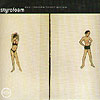 It's quite strange to imagine that there could now very well be ageneration of electronic-based musicians/artists who never sat forhours practicing scales, modes, chords, rhythms, what have you, on anactual instrument. Since the laptop revolution has brought aboutpractically every instrumental sound under the sun for consumption,there's not really a great need to sit with a chunk of wood or brass.Not that I don't favor electronic-based music or the musicians who makeit, but hearing additional sounds that were actually in the ether atsome point before being committed to tape (sorry, hard disk) makes fora refreshing change now and again. I'm What's There to Show That Something's Missing,the latest release from Belgian native Arne van Petegem (aka Styrofoam)enjoyably blends the glitch-type Powerbook beats and sounds with thelive element of prominent vocals and acoustic guitar at times for aninteresting take on modern pop music. "The Long Wait" opens the discwith the arpeggiations of said guitar and builds into a laid backgroove of electronic beats and keyboards that gradually thickens withsome synth bass while van Petegem's lush vocal layers deliver both acatchy melody and lyrics. The more pop-oriented "A Heart Without AMind" skips along to a wall of synth flourishes with the bass line andvocals leading the progressions until guitar and keyboards take over.The opening tape shuttle sounds of the more electronic "Forever, YouSaid Forever" drop out for some sparse keyboards and linear drummachine rhythms to provide the backing track for a sampled conversationof a couple that are in the midst of an arguement over a break-up. Thedisc's eight tunes are well crafted and arranged to highlight vanPetegem's skills as both a programmer and guitar player/vocalist byaugmenting the former with the latter. While this particular formulafor the laptop set is nothing new, Styrofoam's take on it makes for amore animated disc with the likeness of a full band.
It's quite strange to imagine that there could now very well be ageneration of electronic-based musicians/artists who never sat forhours practicing scales, modes, chords, rhythms, what have you, on anactual instrument. Since the laptop revolution has brought aboutpractically every instrumental sound under the sun for consumption,there's not really a great need to sit with a chunk of wood or brass.Not that I don't favor electronic-based music or the musicians who makeit, but hearing additional sounds that were actually in the ether atsome point before being committed to tape (sorry, hard disk) makes fora refreshing change now and again. I'm What's There to Show That Something's Missing,the latest release from Belgian native Arne van Petegem (aka Styrofoam)enjoyably blends the glitch-type Powerbook beats and sounds with thelive element of prominent vocals and acoustic guitar at times for aninteresting take on modern pop music. "The Long Wait" opens the discwith the arpeggiations of said guitar and builds into a laid backgroove of electronic beats and keyboards that gradually thickens withsome synth bass while van Petegem's lush vocal layers deliver both acatchy melody and lyrics. The more pop-oriented "A Heart Without AMind" skips along to a wall of synth flourishes with the bass line andvocals leading the progressions until guitar and keyboards take over.The opening tape shuttle sounds of the more electronic "Forever, YouSaid Forever" drop out for some sparse keyboards and linear drummachine rhythms to provide the backing track for a sampled conversationof a couple that are in the midst of an arguement over a break-up. Thedisc's eight tunes are well crafted and arranged to highlight vanPetegem's skills as both a programmer and guitar player/vocalist byaugmenting the former with the latter. While this particular formulafor the laptop set is nothing new, Styrofoam's take on it makes for amore animated disc with the likeness of a full band. There's a long list of albums with titles that are misnomers for the music inside. With Summer Sun,Yo La Tengo are pretty close to adding another to the list. Severaltracks interspersed save the album from this category by shining alittle light in, though the band generally gets mired in theirexquisitely somber sound, which is a very good thing. Album afteralbum, Yo La Tengo produce quality music with impressive productionvalues, and this album is no different. The proceedings start, as morethan one Yo La Tengo album has, with an instrumental of sorts, and"Beach Party Tonight" is a clear indication that the electronic side ispossessing the band more and more on each release. The whole albumfeatures more technology, and these additions lend a lot to the generalaura of the music without being intrusive. Ira Kaplan's vocals arefrequently hushed, as usual, and on "Beach Party," they're almostincomprehensible, bringing the music to the forefront. Georgia Hubleyis coming into her own vocally, sounding more and more like thechanteuse that's been hiding away. "Little Eyes" is a perfect power popproduction, much like the more mainstream fair of I Can Hear the Heart Beating as One.Elsewhere the tradition of one epic song per album continues, too, with"Let's Be Still" as this album's "Night Falls on Hoboken," and it's abit more coherent and a bit more freeform than before. One thing thatthe title suggests clearly, though, is that Yo La Tengo were out tohave a lot more fun this time, and it shows on tracks like "Georgia vs.Yo La Tengo," an almost '70s porn anthem laden with effects and funkpiano, and on "Winter A-Go-Go", which could almost pass for Steve andEydie. Even though there's more sun in the sky, there's always shadowscast, and that's what they thankfully couldn't avoid. Summer Sunis not their best work, but it is another solid album from a band notafraid to expand their sound, take chances or let loose every now andthen.
There's a long list of albums with titles that are misnomers for the music inside. With Summer Sun,Yo La Tengo are pretty close to adding another to the list. Severaltracks interspersed save the album from this category by shining alittle light in, though the band generally gets mired in theirexquisitely somber sound, which is a very good thing. Album afteralbum, Yo La Tengo produce quality music with impressive productionvalues, and this album is no different. The proceedings start, as morethan one Yo La Tengo album has, with an instrumental of sorts, and"Beach Party Tonight" is a clear indication that the electronic side ispossessing the band more and more on each release. The whole albumfeatures more technology, and these additions lend a lot to the generalaura of the music without being intrusive. Ira Kaplan's vocals arefrequently hushed, as usual, and on "Beach Party," they're almostincomprehensible, bringing the music to the forefront. Georgia Hubleyis coming into her own vocally, sounding more and more like thechanteuse that's been hiding away. "Little Eyes" is a perfect power popproduction, much like the more mainstream fair of I Can Hear the Heart Beating as One.Elsewhere the tradition of one epic song per album continues, too, with"Let's Be Still" as this album's "Night Falls on Hoboken," and it's abit more coherent and a bit more freeform than before. One thing thatthe title suggests clearly, though, is that Yo La Tengo were out tohave a lot more fun this time, and it shows on tracks like "Georgia vs.Yo La Tengo," an almost '70s porn anthem laden with effects and funkpiano, and on "Winter A-Go-Go", which could almost pass for Steve andEydie. Even though there's more sun in the sky, there's always shadowscast, and that's what they thankfully couldn't avoid. Summer Sunis not their best work, but it is another solid album from a band notafraid to expand their sound, take chances or let loose every now andthen.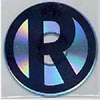 Replicator are a neat dynamic rock trio from the San Francisco Bay Area who get compared to Shellac a lot. This seems to be mostly because Shellac bassist Bob Weston records them and because they are quite vocal on the Shellac email list, which is how I happened to hear about them. To me a much better comparison would be Poster Children, but imagine how they might have ended up had they introduced the loops and synths of Salaryman into their exuberant rockpop shapes instead of separating into two different projects involving the same people.
Replicator are a neat dynamic rock trio from the San Francisco Bay Area who get compared to Shellac a lot. This seems to be mostly because Shellac bassist Bob Weston records them and because they are quite vocal on the Shellac email list, which is how I happened to hear about them. To me a much better comparison would be Poster Children, but imagine how they might have ended up had they introduced the loops and synths of Salaryman into their exuberant rockpop shapes instead of separating into two different projects involving the same people. Lately it seems Mark Eitzel has just been taking opportunities as they come. He was invited to record albums in Chicago and Athens, served a month long residency at the Knitting Factory in NYC and will soon tour Portugal and Spain. 'The Ugly American' is the result of the trip to Greece and the debut album from the UK's Tongue Master (a U.S. release date is likely for June or July via Thirsty Ear).
Lately it seems Mark Eitzel has just been taking opportunities as they come. He was invited to record albums in Chicago and Athens, served a month long residency at the Knitting Factory in NYC and will soon tour Portugal and Spain. 'The Ugly American' is the result of the trip to Greece and the debut album from the UK's Tongue Master (a U.S. release date is likely for June or July via Thirsty Ear).